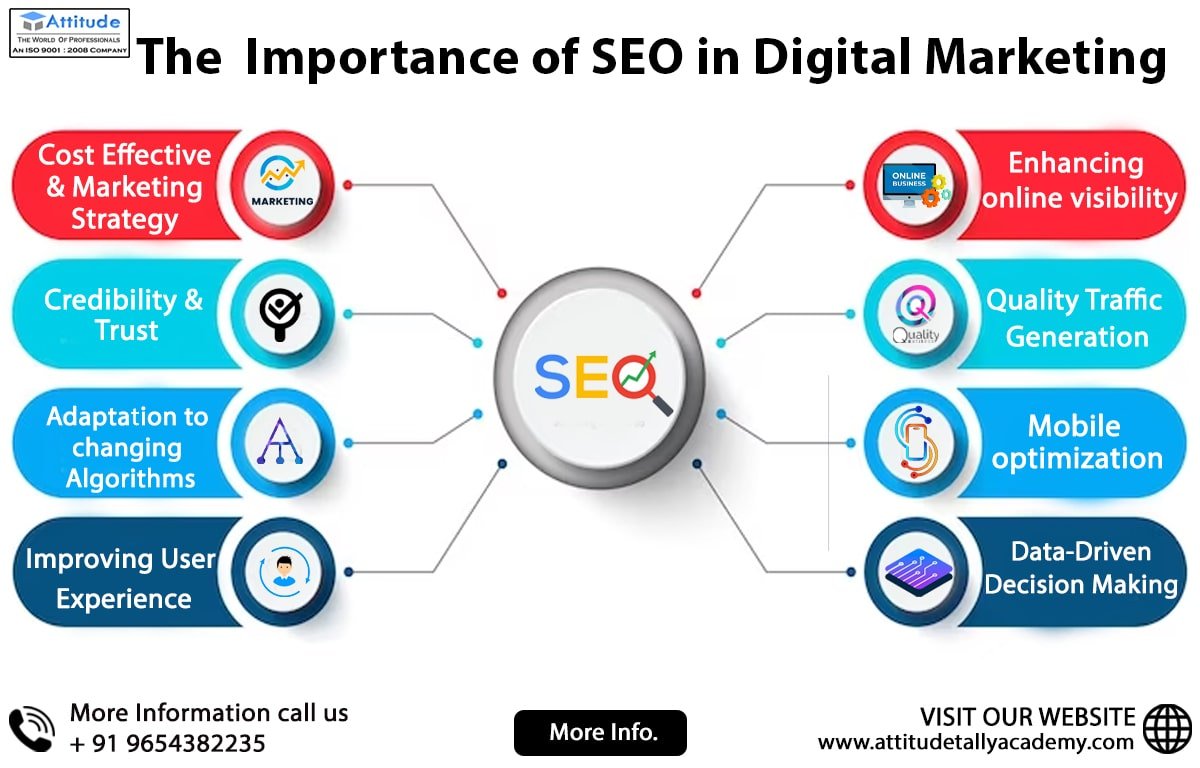Understanding the Duty of Customer Experience in Modern SEO Practices
In an era where electronic visibility can make or break a business, recognizing the crossway in between individual experience (UX) and modern-day SEO techniques is much more important than ever. As search engines progress, they increasingly focus on sites that offer seamless, appealing experiences to individuals. Elements such as website speed, mobile-friendliness, and instinctive navigation are no much longer plain enhancements; they are crucial to SEO success. Yet, just how do these elements exactly affect search rankings? And just how can companies guarantee their electronic content not only satisfies yet exceeds progressing assumptions? These questions develop the backbone of a crucial conversation.
The Evolution of SEO
Over the years, the landscape of search engine optimization (SEO) has actually undertaken substantial change, showing the vibrant nature of digital technology and individual behavior. At first, SEO was mainly about keyword stuffing and link-building strategies, focusing greatly on adjusting internet search engine formulas to enhance web site rankings. Nonetheless, as internet search engine came to be more advanced, these techniques began to lose efficiency and relevance.

Furthermore, mobile optimization and voice search have come to be important elements of search engine optimization approaches. With the proliferation of smart devices, making certain internet sites are mobile-friendly has actually ended up being a requirement. Voice search, driven by virtual aides like Siri and Alexa, has actually even more changed SEO methods in the direction of natural language handling and conversational content.
In significance, the evolution of SEO shows a more comprehensive trend in the direction of boosting individual satisfaction by lining up electronic web content with the nuanced expectations of contemporary individuals.
Secret UX Aspects in Search Engine Optimization
In the realm of search engine optimization, essential individual experience (UX) aspects are critical for improving both individual contentment and search engine positions. Websites maximized for mobile usage not just cultivate a smooth individual experience but also line up with Google's mobile-first indexing approach.
Clear call-to-action (CTA) switches lead users towards preferred activities, boosting conversion prices. Accessibility can not be neglected; guaranteeing that material is obtainable to customers with disabilities broadens reach and complies with web standards. Integrating these UX elements effectively supports SEO efforts by promoting user retention and assisting in search engine understanding of site web content.
Impact of Website Speed
While often underestimated, the influence of website speed on customer experience and Search engine optimization can not be overstated. A slow-loading internet site can lead to enhanced bounce prices, as individuals are most likely to abandon a website if it takes more than a few secs to load.
Furthermore, site speed straight affects conversion rates and customer satisfaction. By dealing with these technological facets, sites can enhance their rate, thereby boosting individual experience and enhancing their Search engine optimization efficiency. Ultimately, spending in website speed is spending in both client satisfaction and search engine visibility, essential elements in the electronic marketplace.
Mobile-Friendliness Value
Adapting to mobile-friendliness has ended up this content being an essential element of efficient SEO practices. As mobile phones progressively control internet use, search engines like Google have actually shifted in the direction of mobile-first indexing, meaning the mobile version of an internet site is prioritized in ranking algorithms (seo adelaide). Mobile-friendliness is not simply a trend but a necessity in enhancing a site's internet search engine efficiency

In addition, mobile-friendliness impacts neighborhood search engine optimization substantially. As individuals frequently search for local details on-the-go, having a mobile-optimized website enhances exposure in local search results, driving foot website traffic and conversions for organizations. Internet sites that fall short to focus on mobile-friendliness risk losing on important traffic, as individuals are less most likely to engage with sites that are tough to browse on their mobile phones. Integrating mobile optimization into SEO approaches is critical for maintaining affordable benefit in the electronic landscape.
Enhancing Navigation for SEO
As services recognize the need of mobile-friendliness in search engine optimization, another critical aspect arises: boosting navigation - seo adelaide. Effective navigation is crucial as it directly affects user experience (UX), which online search engine progressively prioritize. A well-structured website makes sure that customers can quickly find the web content they are trying to find, minimizing bounce prices and enhancing dwell time, both of which are critical SEO metrics
To enhance navigation, internet sites need to take on a rational hierarchy that overviews individuals perfectly through content. This consists of clear, concise food selection tags and an instinctive layout, which collectively simplify the user journey. Employing breadcrumb routes can even more assist users in comprehending their location within a why not try this out website, fostering a feeling of positioning and control.
Making certain navigation is responsive across tools warranties that users take pleasure in a regular experience, important in today's multi-device globe. Inevitably, boosting navigating is not merely regarding appearances; it is a strategic strategy to maximizing both user engagement and search engine performance.
Final Thought
Integrating user experience right into contemporary SEO methods is critical for maximizing search engine rankings and enhancing internet site efficiency. As search engines prioritize user intent, essential aspects such as site rate, mobile-friendliness, and user-friendly navigation play a crucial role in conference individual assumptions.
In the realm of search engine optimization, key customer experience (UX) elements are critical for improving both user contentment and search engine rankings. Incorporating these UX aspects effectively supports Search engine optimization efforts by advertising user retention and promoting search engine understanding of site web content.
As individuals often browse for local info on-the-go, having a mobile-optimized site improves presence in regional search outcomes, driving foot traffic and conversions for organizations.Including customer experience right into modern Search engine optimization methods is paramount for enhancing search engine rankings and boosting web site performance. As search engines prioritize customer intent, important aspects such as website rate, mobile-friendliness, and user-friendly navigating play an essential duty in conference user expectations.